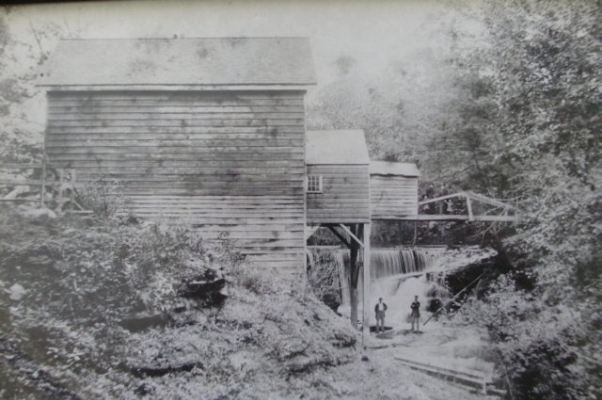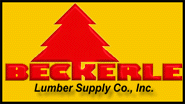|
|
Wood Movement — You Can’t Stop It!Wood's Moisture Content will fluctuate based on the relative humidity (RH) of the surrounding air. As humidity increases, the Moisture Content increases, and the wood expands, and as the humidity decreases, Moisture Content decreases, and the wood shrinks. The moisture content of wood is tied directly to the relative humidity of the surrounding air. The higher the relative humidity, the higher the Moisture Content of the wood. If the moisture content of the wood starts out too high, and the wood dries out, the Moisture Content of the wood decreases and shrinkage occurs. When the Moisture Content starts out too low, the wood will expand as it takes in moisture.
Size of the tree rings matters:
The wood being produced today 'MOVES' more than in the old daysWhy does wood rot now more than in the "old" days?
Grain orientation matters:Boards are characterized as being either “flat sawn” or “quarter sawn.” Quarter sawn lumber (also referred to as “rift sawn” or “vertical grain”) shrinks and expands roughly half as much as flat sawn. Most over-the-counter finish material is flat sawn, and you should assume flat sawn values unless you’re sure your material is quarter sawn. Quarter sawn lumber has annular rings that are oriented between 45 and 90 degrees to the board’s face. Flat sawn grain orientation falls between 0 and 45 degrees to the board’s face. 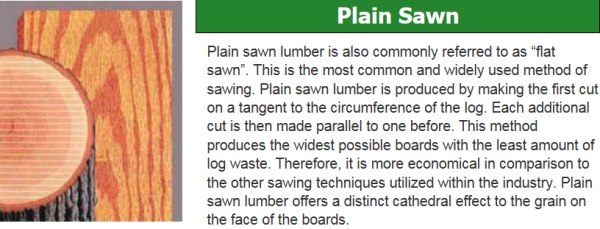 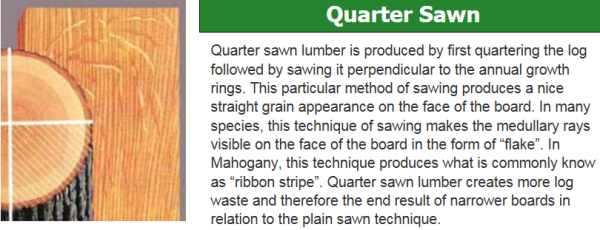 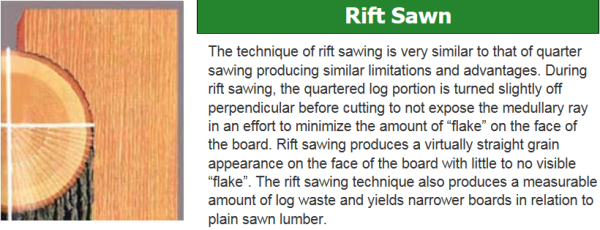 TIMBER TERMS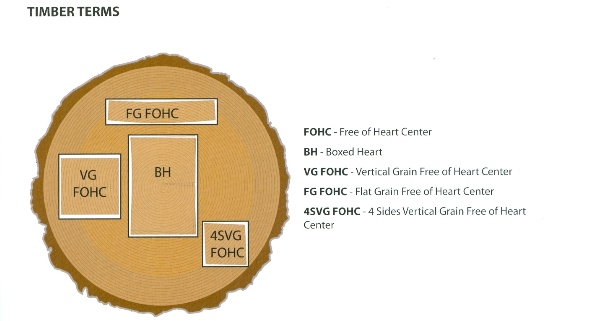 PHYSICAL PROPERTIES OF WOOD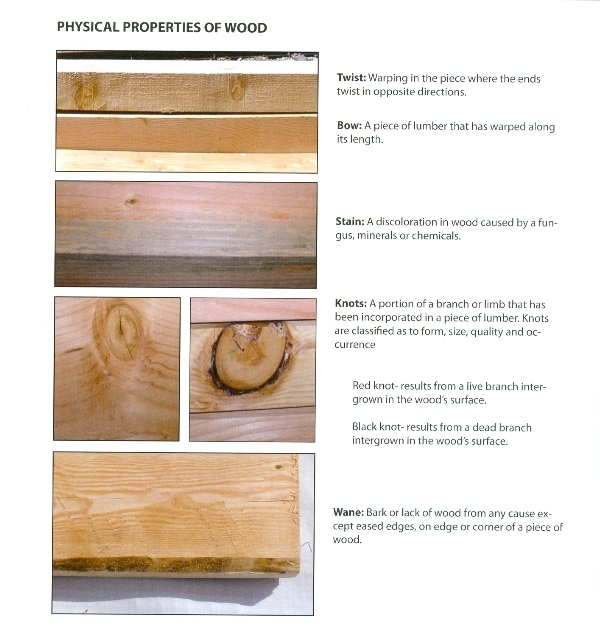 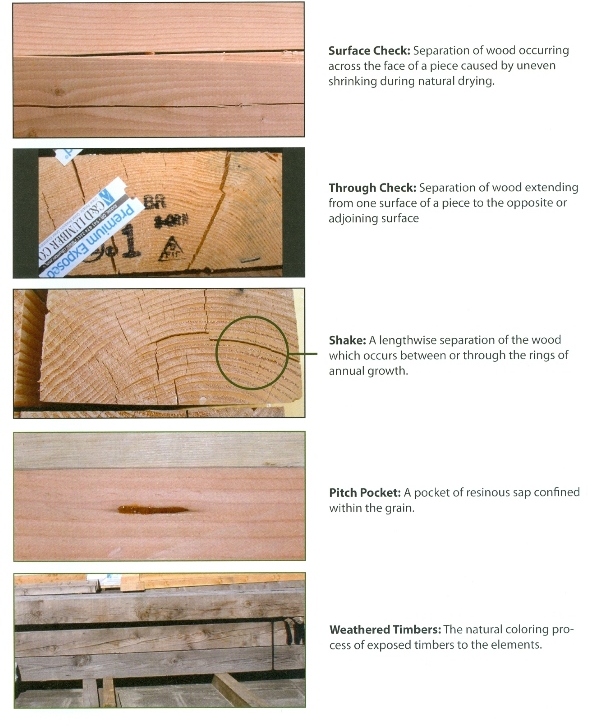 MANUFACTURING IMPERFECTIONS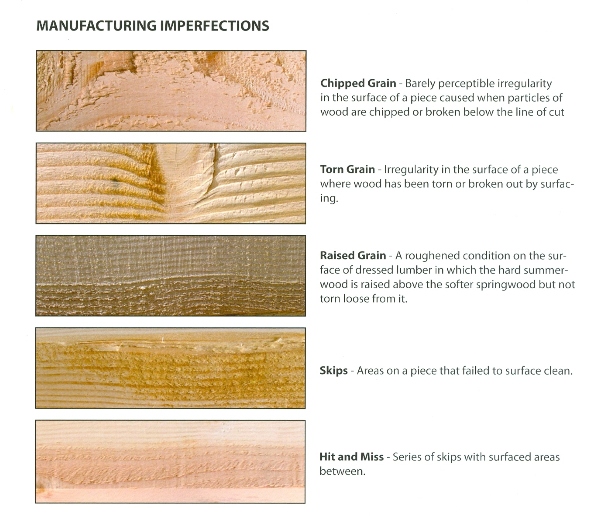 DOUGLAS FIR GRADES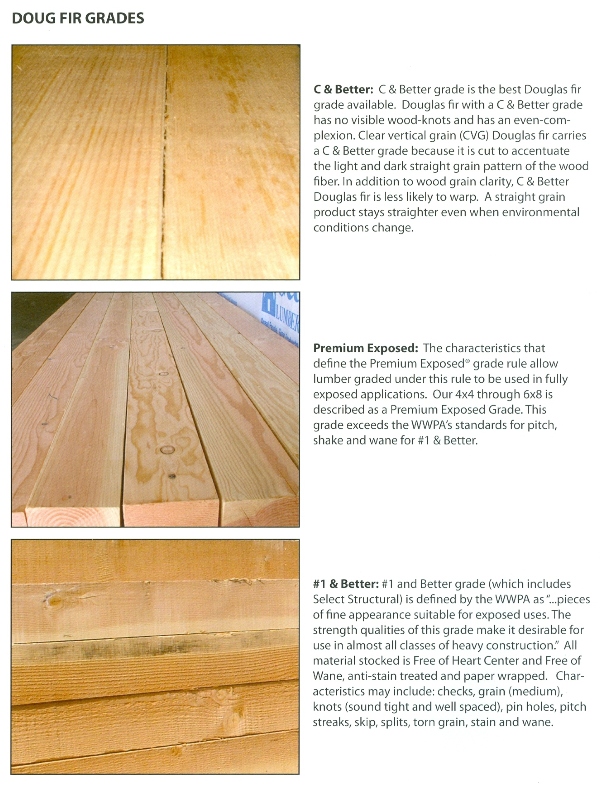 WESTERN RED CEDAR GRADES SEASONING MILLING OPTIONS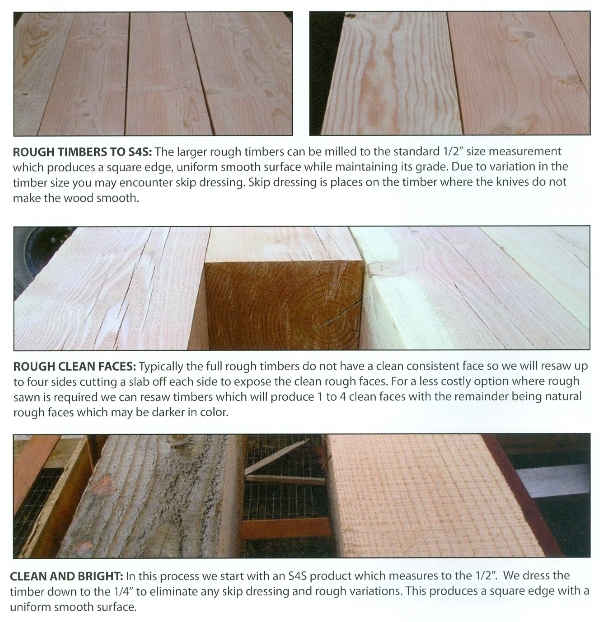 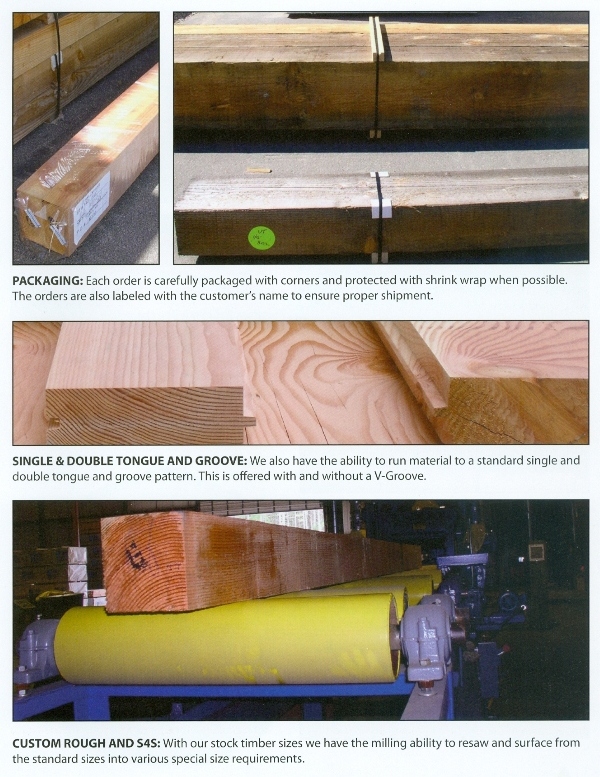
General Forestry Facts•To grow a pound of wood, a tree consumes about 1.47 pounds of carbon dioxide and releases approximately 1.07 pounds of oxygen. •Young, well-managed forests tend to be the most efficient at absorbing carbon dioxide and producing oxygen. Old, overcrowded, slow-growing forests begin to use more oxygen that they produce. •Growing forests are excellent carbon "sinks." Growth in all United States forests removes approximately 9% of total carbon dioxide emissions in the United States. •Wood products are efficient to produce when compared to other products. Aluminum products require 126 times more energy to produce. Steel products require 24 times more energy to produce. Glass products require 14 times more energy to produce. Plastic products require 6 times more energy to produce. Cement products require 4.5 times more energy to produce. •Thermal resistance of various building products: Product R value per inch of thickness Softwood lumber 1.25 Hardwood lumber .91 Brick .11 Concrete/Stone .08 Steel .0032 Aluminum .0007 •An acre of trees can remove about 13 tons of dust and gasses from the surrounding environment every year. •South Carolina’s Best Management Practices (BMPs) are guidelines designed to protect water quality during forestry activities such as harvesting. On 3 separate annual evaluations, compliance with BMPs has been found to be between 85 and 90 percent. •Americans used an average of 749 pounds of paper and 18 cubic feet of lumber and structural panels per person 1994. •Lumber manufacturers use about 98% of each tree that is harvested. Processing bark for fuel and mulch, wood chemicals, and all fiber insures almost complete utilization. •Lignin is a sticky substance removed from trees in the paper making process. It is used in toothpaste, baby food, some medicines, and flavoring in vanilla ice cream. •Sapwood is the part of a tree that stores water. The African baobab tree may have a trunk up to 90 feet around and can store up to 25,000 gallons of water. •Bark is the outside covering on a tree that protects from insects, diseases, and fire. The bark of a birch tree may be as thin as one-quarter inch, while a giant sequoia’s bark may be as much as two feet thick. •The single oldest living thing on earth is a tree, a 4,600-year-old bristlecone pine tree in California. It was growing when Egyptians built the pyramids. •An average singe-family home contains approximately 16,900 board feet of lumber and 10,000 square feet of panel products. •The United Nations forecasts that world demand for timber products will nearly double by the year 2050. •Forest products are both recyclable and biodegradable. •A standard cord is 128 cubic feet of stacked wood. A cord of wood yields: 7,500,000 toothpicks, or 30 Boston Rockers, or 12 dining room tables (each table seats eight), or 1,000 pounds of paper, or 460,000 personal checks, or 89,870 sheets of letter head bond paper (size 8 ½" s 11"), or 61,370 standard #10 envelopes, or 14,384,000 commemorative-size postage stamps, or 1,200 copies of the National Geographic, or 2,700 copies of the average daily paper (35 pages), or 250 copies of the Sunday New York Times, or 942 one-pound books, or the heating value of one ton of coal, or the heating value of 200 gallons of fuel oil.
ROCKLAND COUNTY's Best LUMBER Supply Choice We Are Your Convenient Outdoor Lumber Yard. Since 1940, Remodelers have depended on Beckerle Lumber for quality lumber products and knowledgeable service. At Beckerle Lumber, we work hard at saving our customer's, time and money. Your business, is our business. Four convenient rockland county ny locations. Beckerle Lumber, easy to reach, easy to deal with. Call us for all your lumber needs. Thankyou for making us LUMBER ONE.  www.beckerlelumber..... MISSION: To Be THE Most Helpful Lumber Supplier In Rockland County New York.... Beckerle Lumber Supply Co., Inc. 2020 © .... Thanks for coming! | |







